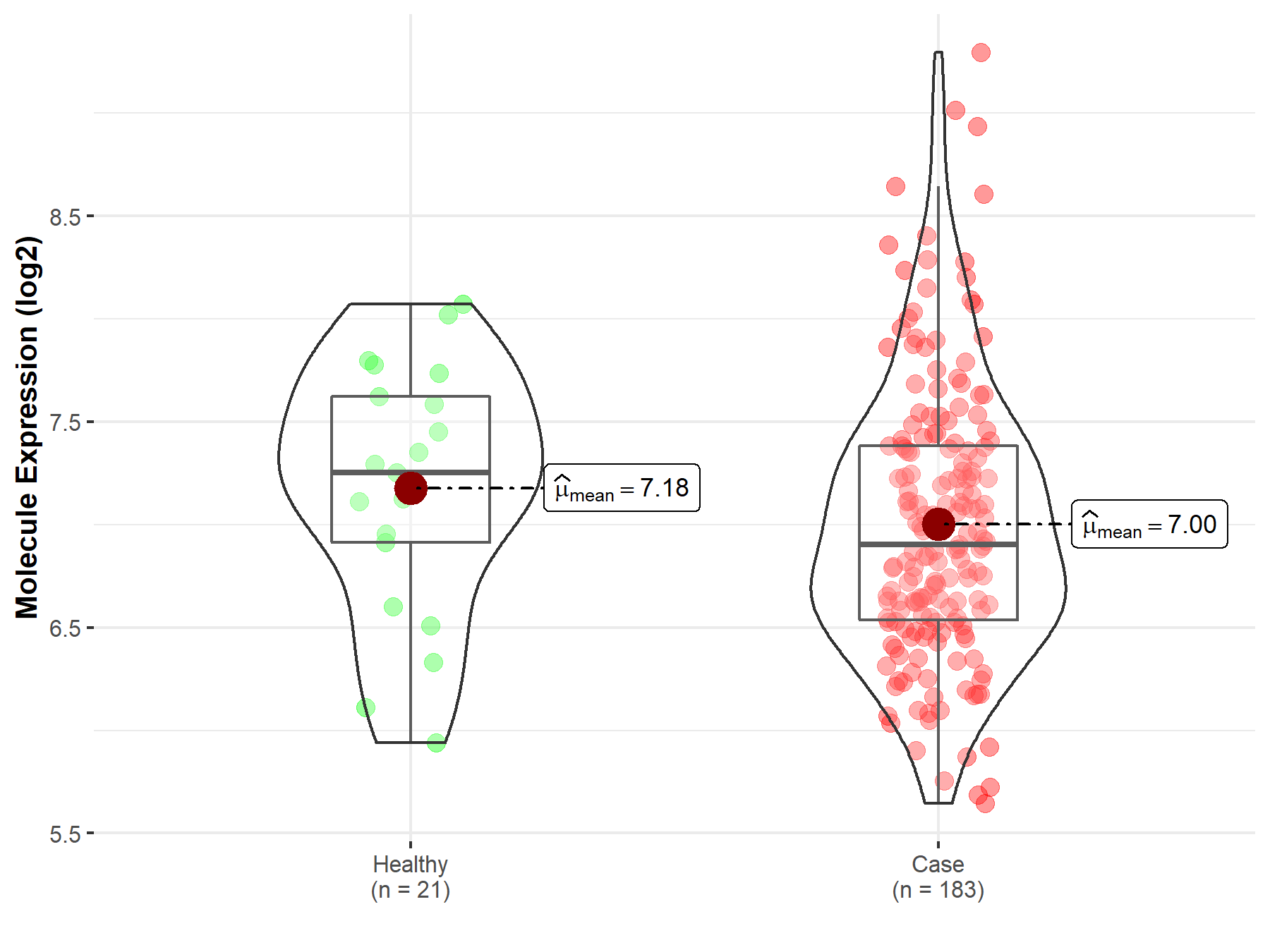Molecule Information
General Information of the Molecule (ID: Mol00080)
| Name |
Core histone macro-H2A.1 (H2AFY)
,Homo sapiens
|
||||
|---|---|---|---|---|---|
| Synonyms |
Histone macroH2A1; mH2A1; Histone H2A.y; H2A/y; Medulloblastoma antigen MU-MB-50.205; H2AFY
Click to Show/Hide
|
||||
| Molecule Type |
Protein
|
||||
| Gene Name |
H2AFY
|
||||
| Gene ID | |||||
| Location |
chr5:135334381-135399914[-]
|
||||
| Sequence |
MSSRGGKKKSTKTSRSAKAGVIFPVGRMLRYIKKGHPKYRIGVGAPVYMAAVLEYLTAEI
LELAGNAARDNKKGRVTPRHILLAVANDEELNQLLKGVTIASGGVLPNIHPELLAKKRGS KGKLEAIITPPPAKKAKSPSQKKPVSKKAGGKKGARKSKKKQGEVSKAASADSTTEGTPA DGFTVLSTKSLFLGQKLNLIHSEISNLAGFEVEAIINPTNADIDLKDDLGNTLEKKGGKE FVEAVLELRKKNGPLEVAGAAVSAGHGLPAKFVIHCNSPVWGADKCEELLEKTVKNCLAL ADDKKLKSIAFPSIGSGRNGFPKQTAAQLILKAISSYFVSTMSSSIKTVYFVLFDSESIG IYVQEMAKLDAN Click to Show/Hide
|
||||
| Function |
Variant histone H2A which replaces conventional H2A in a subset of nucleosomes where it represses transcription. Nucleosomes wrap and compact DNA into chromatin, limiting DNA accessibility to the cellular machineries which require DNA as a template. Histones thereby play a central role in transcription regulation, DNA repair, DNA replication and chromosomal stability. DNA accessibility is regulated via a complex set of post-translational modifications of histones, also called histone code, and nucleosome remodeling. Involved in stable X chromosome inactivation. Inhibits the binding of transcription factors, including NF-kappa-B, and interferes with the activity of remodeling SWI/SNF complexes. Inhibits histone acetylation by EP300 and recruits class I HDACs, which induces a hypoacetylated state of chromatin.
Click to Show/Hide
|
||||
| Uniprot ID | |||||
| Ensembl ID | |||||
| HGNC ID | |||||
| Click to Show/Hide the Complete Species Lineage | |||||
Type(s) of Resistant Mechanism of This Molecule
Drug Resistance Data Categorized by Drug
Approved Drug(s)
1 drug(s) in total
| Drug Resistance Data Categorized by Their Corresponding Mechanisms | ||||
|
|
||||
| Disease Class: Prostate cancer | [1] | |||
| Resistant Disease | Prostate cancer [ICD-11: 2C82.0] | |||
| Resistant Drug | Sulforaphane | |||
| Molecule Alteration | Expression | Down-regulation |
||
| Experimental Note | Revealed Based on the Cell Line Data | |||
| Cell Pathway Regulation | Cell proliferation | Activation | hsa05200 | |
| In Vitro Model | LNCaP cells | Prostate | Homo sapiens (Human) | CVCL_0395 |
| PC3 cells | Prostate | Homo sapiens (Human) | CVCL_0035 | |
| Experiment for Molecule Alteration |
qPCR | |||
| Experiment for Drug Resistance |
Cell proliferation assay | |||
| Mechanism Description | Knockdown of LINC01116 with siRNA decreased proliferation of prostate cancer cells, and significantly upregulated several genes including GAPDH (regulates glycolysis), MAP1LC3B2 (autophagy) and H2AFY (chromatin structure) and LncRNA LINC01116 is upregulated in a human prostate cancer cell line, is decreased by SFN treatment, and promotes cell proliferation in a human cancer cell line. | |||
Disease- and Tissue-specific Abundances of This Molecule
ICD Disease Classification 02

| Differential expression of molecule in resistant diseases | ||
| The Studied Tissue | Prostate | |
| The Specified Disease | Prostate cancer | |
| The Expression Level of Disease Section Compare with the Healthy Individual Tissue | p-value: 2.25E-01; Fold-change: -3.51E-01; Z-score: -5.79E-01 | |
|
Molecule expression in the diseased tissue of patients
Molecule expression in the normal tissue of healthy individuals
|
||
| Disease-specific Molecule Abundances |

|
Click to View the Clearer Original Diagram |
Tissue-specific Molecule Abundances in Healthy Individuals


|
||
References
If you find any error in data or bug in web service, please kindly report it to Dr. Sun and Dr. Zhang.
